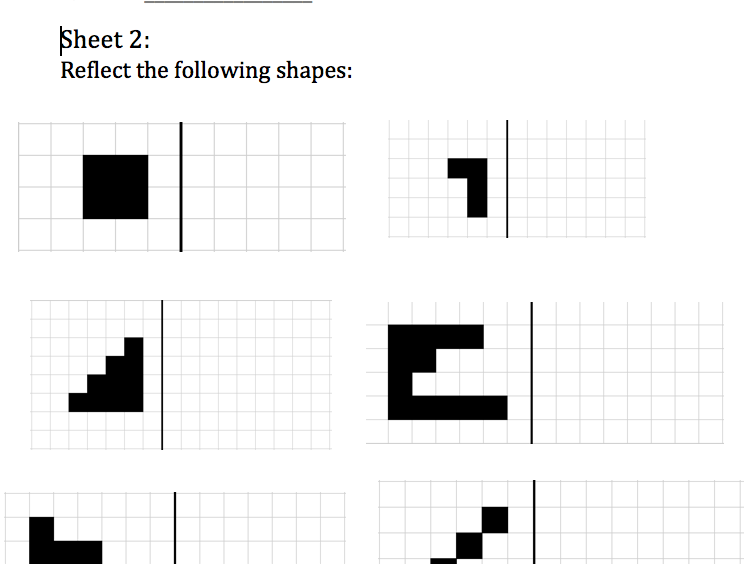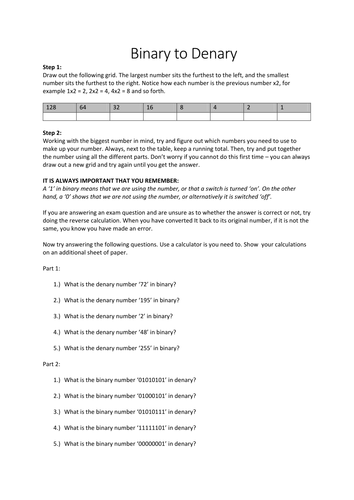31Uploads
41k+Views
14k+Downloads
All resources

Stakeholders Crossword (Business Studies GCSE/AS/A Level)
A simple excel document containing a crossword, with answers, where students read the definitions and clues for each stakeholder, and fill the crossword in with the clues given.
Ways that this resource can be used...
Ask the students to complete the crossword as a starter activity (5-10 minutes). Then ask the students to hilight the stakeholders as either internal or external stakeholders of a business. Alternatively, after completing a lesson on stakeholders, use this resource as a plenary activity to summarise knowledge and reinforce lesson understanding.
Who can use this resource?
This resource is designed for any level, and it can easily be incorporated into a wide range of Business Studies qualifications, for example AQA, EdExcel and OCR Business Studies at GCSE and AS/A Level, for example the new AQA AS 7131 qualification.

Business Studies: Sales Revenue Questions
Teaching the AQA 7131 AS spec? Take a look at the quick-fire revision question series:
https://www.tes.com/teaching-resource/-whole-as-course-quick-fire-questions-aqa-as-business-7131-11557714
A quick word document containing a few sales revenue questions, which can be given to test student's understanding.
All the questions involve the formula selling price x number of units sold = sales revenue, and this has been reversed so that students can calculate other parts of the equation, such as calculating number of units when given selling price and the total sales revenue.
This resource ties in with a number of courses and exam boards, and can be used in a variety of specifications, and is suitable for both GCSE and AS/A level, for example 7131/7132 AQA business and 2130 AQA business.

Primary/Early Secondary - Reflection over two quadrants learning pack
This learning pack contains:
- Two easy-to-follow question pages, of varying difficulty. These involve square-grid reflection, where students can colour in the reflected shape on the opposite side of the mirror line. (word document)
- An engaging 'reflect the first letter of your name' exercise' which helps students to understand the concept of reflection along the mirror line. (word document)
- A slightly harder 'reflect the picture of the house' sheet, which is in full colour and allows students to explore reflection through the use of colour (word document)
- A mini white board sheet containing a blank set of reflection squares and a mirror line in the centre which can be given either to students to practice questions as a laminated sheet or put on the interactive white board for the purpose of demonstration. (powerpoint presentation and word document)

Input and Output (I/O) Crossword
A simple excel document containing a crossword, with answers, where students read the definitions and clues for an input device, and fill the crossword in with these clues.
Ways that this resource can be used...
Ask the students to complete the crossword as a starter activity (5-10 minutes). Then ask the students to hilight the input and the output devices in two different colours. Students can then discuss whether the hybrid devices, for example the touch screen, are an input or an output device. Alternatively, after completing a lesson on input and output devices, use this resource as a plenary activity.
Who can use this resource?
Although this resource is designed for KS3 teaching, it can easily be incorporated into computing or info-tech qualifications, for example OCR, AQA, EDEXCEL etc Info-Tech or Computing specifications at GCSE level.

Denary and Hexadecimal Conversion homework task
A simple denary-hexadecimal and hexadecimal-denary task that can be given to students to allow them to develop understanding and reinforce methods by practicing calculations. Calculations are given in a variety of formats, for example a match-up exercise and constructing words out of hexadecimal letters which are converted from their denary equivalent.
This is suitable for a GCSE level, however, can be used to challenge G/T students in KS3 and used as a introduction to test understanding at a more advanced AS Level.
The answers to this homework task are included in a separate word document.

Computer Science - Denary, Binary, and Hex matchup game
A set of printable cards, which are in sets of Denary, Binary, and Hex, and correspond to each other. This means that the cards can be used for a ‘matching’ type activity, where cards have to be put in the groups, and encourages students to convert between the alternating types.
The cards are matched to be one per page, which means that cards can be printed in any way necessary, however these cards are designed to be printed out small, for example 9 per page.
These cards can be used throughout school, but are suited to meet the National Curriculum KS3, GCSE Computing for example OCR and AQA, and even as a starter activity in 6th form for A Level Computing or IT courses.

Binary and Denary/Decimal Simple Homework Task
A quick homework tasks giving a short explanation about binary alongside 5 questions from Binary --> Denary/Decimal, and 5 questions Denary/Decimal --> Binary.
Answers included
Can be used with KS3, GCSE or A LEVEL.
Answers included on a separate document.

Binary Conversion Table - free mini white board binary grid
This resource is a placemat in a word document format which can be laminated to make a mini-white-board, which can be used for practicing binary calculations. It contains a simple table with the binary table on.
The resource can also be printed as 'note handout', which fits multiple tables to each page. This can be used as a space to answer binary questions in a logical format.
This resource is appropriate for secondary education, for example KS3, and can be carried through to GCSE and A Level Computer Science/Computing.
Some examples of specifications that this can be related to:
OCR H046/H446 (7516 7517 AQA)
OCR J276 GCSE / AQA 8520
KS3 National Curriculum Computer Science.

AQA 7036 - The nature and importance of places: Lesson Powerpoint and Resources
Aimed at the new AQA AS Geography 7036 specification, this resource is a powerpoint presentation which can assist teaching in class for the new 2017 exam. This powerpoint and activity pack for '3.2.1.1 - The nature and importance of places' part of the unit covers the basics in an easy-to-follow powerpoint presentation.
Included in this powerpoint are definitions for the key terms, short activities and focused questions, and links to articles and YouTube clips which are of relevance to the course, and the key concepts such as endogenous & exogenous factors, sense of place, and approaches to place are covered in-depth.
Also included in this resource are possible lesson starters or tasks that can be given as homework:
1.) A Diamond-9 starter activity "Endogenous & Exogenous character of a place", where factors affecting the character of a place have to be sorted by importance and then categorised into Endogenous or Exogenous factors.
2.) A printable mind-map that students can fill in which helps to reinforce the 'Exclusion Groups' topic.
3.) An entertaining starter activity linking to Media Representations where students are given a name of a place and have to describe it using only stereotypical ideas. This can help students to understand how the media representation of a place is never as accurate or as personal as lived experience.
Disclaimer: Although this resource is matched carefully to the specification to try to ensure it matches, no personal responsibility will be taken for the content of this resource, and this is only aimed as a revision or planning tool, not as a substitute for teaching :)

AS Level OCR Computing H046 - CISC vs RISC lesson resources
A selection of three resources which can be used to help aid the teaching of the CISC vs RISC section of the OCR course.
Included:
1.) A powerpoint from which a lesson can be planned, which includes:
- What are CISC and RISC?
- What are the differences between CISC and RISC?
- The uses of RISC and CISC
2.) A quick 5 minute knowledge-check questions which can be used as a plenary activity to reinforce knowledge. These are simple questions such as "State one advantage, and one disadvantage for using a CISC processor". If the student does not know one of these areas, this hilights an area for further teaching.
3.) A PDF containing match-up cards. These can be used to develop understanding of the differences between CISC and RISC, for example
- Using a matching-up exercise type activity in pairs or small groups
- Cutting out or putting in a 'blind-bag', where students have to describe a processor characteristic before other members of the class guess.
Disclaimer: These resources are made the best possible to match the OCR specification, but this is not guaranteed. They can also be adapted to other specs such as AQA.

Business - 'Good' vs 'Service' activity revision cards: A Level, GCSE and KS3 resources
33 cards containing a name of a generic product, and an accompanying picture. These can be used to develop the students understanding about the difference between a good and service, and are designed to fit A4 page so they can be printed and/or laminated easily.
Lesson ideas include:
- Printing and asking students in small groups or individually to cut out each and match these into two piles; services and goods. These can then be stuck on large sheets of sugar paper
- As a starter activity where students are asked to split the class up into two depending on whether the card they are given at the start of the lesson is a good or service.
- Cutting out and putting in a bag, folded, and ask students to describe the product on the card without using the explicit name. The rest of the class have to guess what the product is, and whether this is a good or service. This would be a good starter or plenary task to help build on lesson understanding.
These cards are suitable for a KS3 introductory lesson, all the way through GCSE and A-level to act as a starter activity, and can be easily adapted for use in taster sessions. They are relevant to the new AS and A level business 7131/7132 specification, and can be used for teaching the new GCSE 8132.
Included:
33x small printable cards, with a white background, picture and label, at a fit of 3x4 to a page, spanning 3 pages. The downloadable file after purchase is a word document in portrait view.











